I've extensively tested most of the siloing methods you can imagine.
From Bruce Clay's silos to hub pages that link all pages within a content cluster to whatever I made up or read somewhere.
None of them produced the results I was hoping for.
About a year ago, I came up with a siloing technique that beat everything I had tried before.
I don't claim to have invented this method.
There's a good chance someone else figured it out before me.But I've never seen it mentioned in articles about content clusters and silos.
So the only thing I know for sure is that this technique isn't as popular as it should be.
Let's jump right into it...
Pro Tip: LinkBoss is an amazing internal linking tool that implements support for all of the silo structures discussed in this article.
If you want to save time and stop managing your silos manually, click here to check out LinkBoss.
Results
Here are the results of one of the tests I ran:
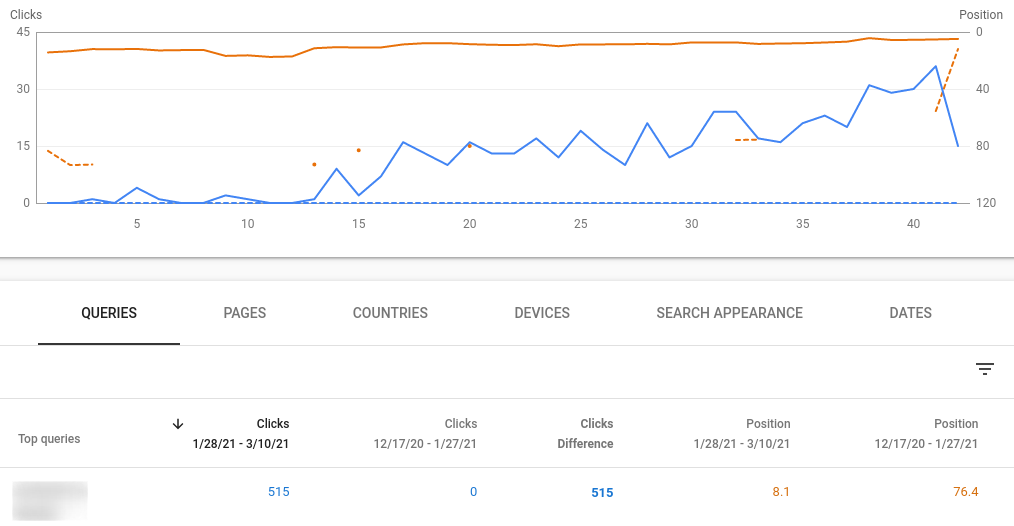
It's a fairly competitive commercial keyword in a medical niche that has moved from pretty much nowhere to the middle of page 1.
All of the content that was moved into the silo already existed on the site and was linked to the target page.
The only thing that changed was that the supporting content was moved into what I call a circle jerk silo, which consists of one money page and 10 supporting pages.
How It Works
You may be wondering why I call this the Circle Jerk Silo…
Well, because it results in a circular feedback loop of relevance and link equity that looks like this:
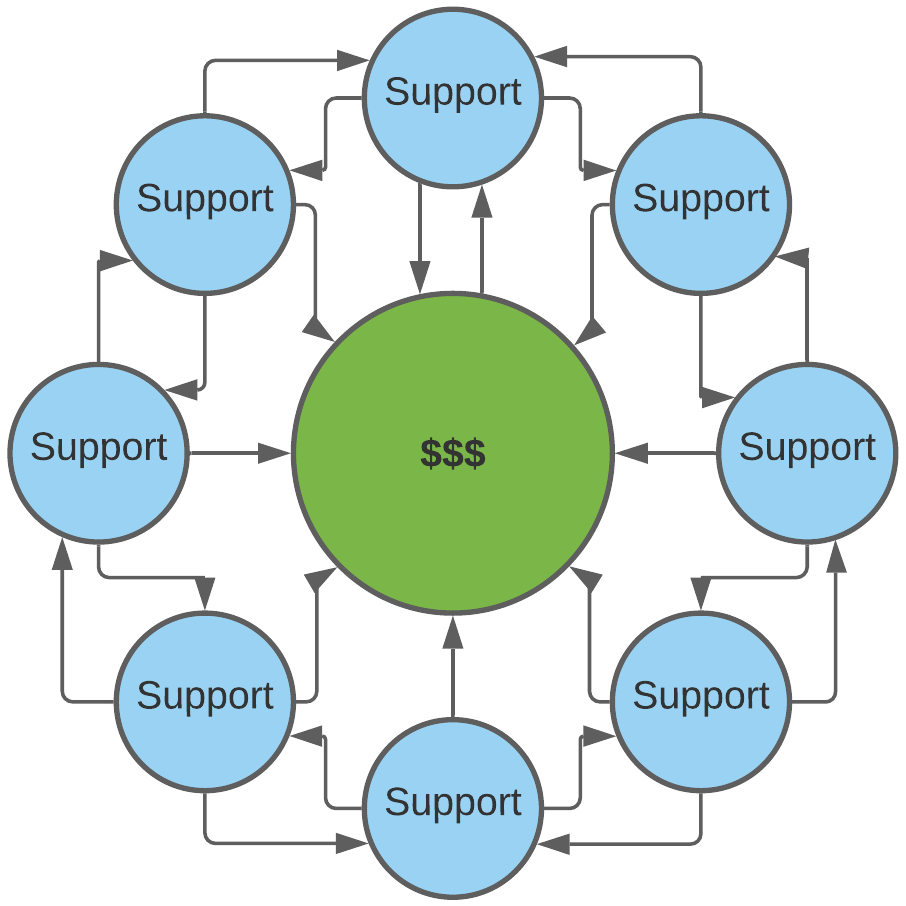
Take a good look.
This is exactly how pages are linked.
The main money page (parent or pillar or whatever you want to call it) links to the first of the supporting pages (child pages).
Then each child page links to the money page, the next child page within the silo, and the previous child page.
Finally, the last supporting page of the silo links back to the first, and the first links back to the last.
If we had one money page and five supporting pages, they would be linked like this (contextual links placed in this exact order):
- Money page links to supporting page A
- Supporting page A links to money page
- Supporting page A links to supporting page B
- Supporting page A links to supporting page E
- Supporting page B links to money page
- Supporting page B links to supporting page C
- Supporting page B links to supporting page A
- Supporting page C links to money page
- Supporting page C links to supporting page D
- Supporting page C links to supporting page B
- Supporting page D links to money page
- Supporting page D links to supporting page E
- Supporting page D links to supporting page C
- Supporting page E links to money page
- Supporting page E links to supporting page D
- Supporting page E links to supporting page A
Easy enough, right?
Topic Selection
When it comes to choosing topics for supporting content, relevance is key.
Ideally, you'll want keyword overlap.
This means that each supporting page should contain a portion of your money page keyword.
Let me give you a real-world example to make this as simple as possible.
Let's say the main keyword of the money page we want to rank for and build a circular silo around is "best golf clubs".
The first step would be to enter that keyword into your favorite keyword research tool.
For me, that would be Ahrefs.
You'd then search for keywords that include "best golf clubs".
In Ahrefs, this is done under the "With the same terms" tab.
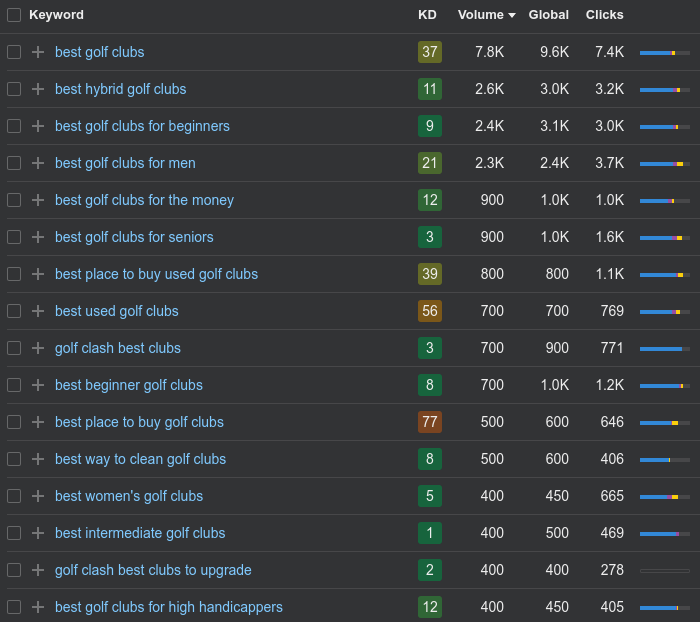
In this example, we would already have plenty of highly relevant subtopics with 100% keyword overlap to use for supporting content.
But that's not always the case, and for a competitive keyword, it makes sense to build a larger silo.
We can find everything we can put into our silo while still keeping topical relevance as high as possible by finding keywords that contain our head term, which in this case would be "golf club(s)".
First, enter only the term that has no plural in Ahrefs Keywords Explorer.
In our case this would be only "golf".
Next, add a new Include filter with the value "club*" to show only keywords that contain both "golf" and anything that starts with "club", which includes "clubs".

Then go through the "Having same terms" and "Questions" tabs to find additional topics for your supporting pages.
I sometimes build silos that consist of 50+ pages, and this example keyword would be one of those cases where I would build a large silo, including nested silos and a hub page (more on that later).
But for now, let's say we just want to build a small silo with 5 supporting pages.
The keywords for these might be as follows:
- best golf clubs (money page)
- best golf clubs for beginners (supporting page A)
- best golf clubs for seniors (supporting page B)
- how to clean golf clubs (supporting page C)
- how to swing a golf club (supporting page D)
- how to hold a golf club (supporting page E)
Anchor Selection
Use keyword-rich anchor text, but don't just repeat the exact match keyword.
The best way to find keywords to use in your anchor text is to use Google Search Console if the money page is already live.
If it's not, use Ahrefs.
Just run your money page keyword through the keyword explorer and see what competing pages rank for positions 1-10:

These are the keywords you want to use as part of your internal anchors pointing to your money page.
You can add words before and after them to make them more unique.
Here's an example of five anchors you might use if you have five supporting pages:
- the best golf club
- list of top golf clubs
- what are the best golf clubs on the market
- use nice golf clubs
- some of the best golf clubs
You get the idea...
For links between supporting pages, you only have two anchors per supporting page (except for the first supporting page, which gets three).
Use an exact match anchor for the link pointing to the next supporting page in the circle and a close variation for the anchor of the link pointing back.
Link Placement
All silo links should be contextual links, and you should always link to the money page first.
If you can, link to the money page from the first few paragraphs of the supporting page - ideally above the fold.
The next link should ideally be to the next page within the silo, and the last link should be back to the previous page.
If you can't find a good place for one or both of the links to the other supporting pages, you can use this trick.
Nested Silos
In some cases, you'll have other money pages as supporting pages in your silo that you want to rank as well.
If they have little competition, they might rank.
But if they're not, you can give them a boost by creating a nested silo (or sub-silo or tier-2 silo or whatever you want to call it).
This is quite easy to do.
The structure would look like this:
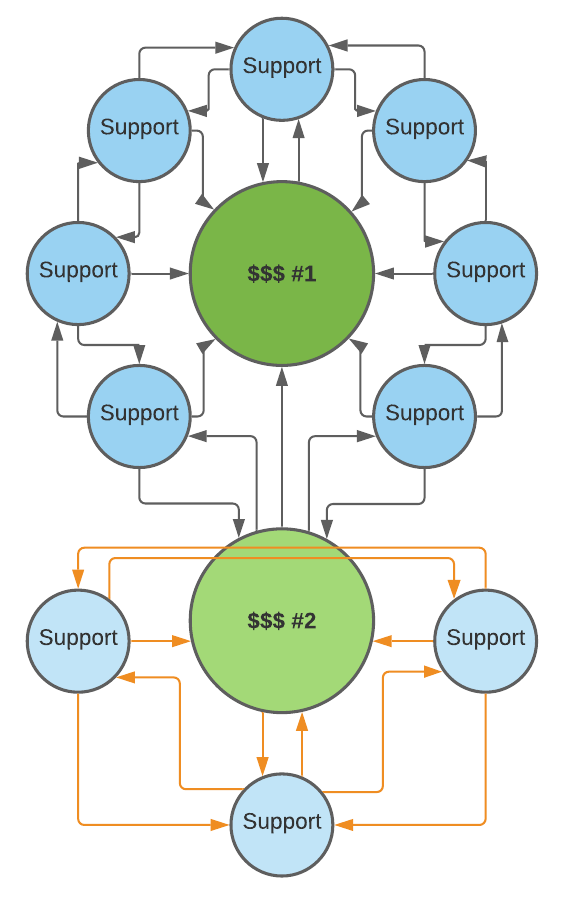
We simply made one of the supporting pages a secondary parent page by building its own Circle Jerk Silo around it.
To stick with our example, "best golf clubs for beginners" would be a good target for a nested silo.
To maximize topical relevance within the nested silo, we'd try to stick to the subtopic when it comes to supporting pages.
This means that if we wanted to build a nested silo for "best golf clubs for beginners", good topics for supporting pages would be
- best left handed golf clubs for beginners
- how to swing a golf club for beginners
- how to hold a golf club for beginners
They all cover "golf clubs" (main topic) and also "beginners" (subtopic of the nested silo), and of course they all have search volume.
Hub Page Hybrid Silo
Including a hub page as the last supporting page in a circular silo structure has more than one advantage:
- It's a great target for link building because it spreads link equity evenly throughout the silo
- It groups silo pages together, providing additional relevance signals
- It's great for users
When you add a hub page to your Circle Jerk Silo, it will look like this:
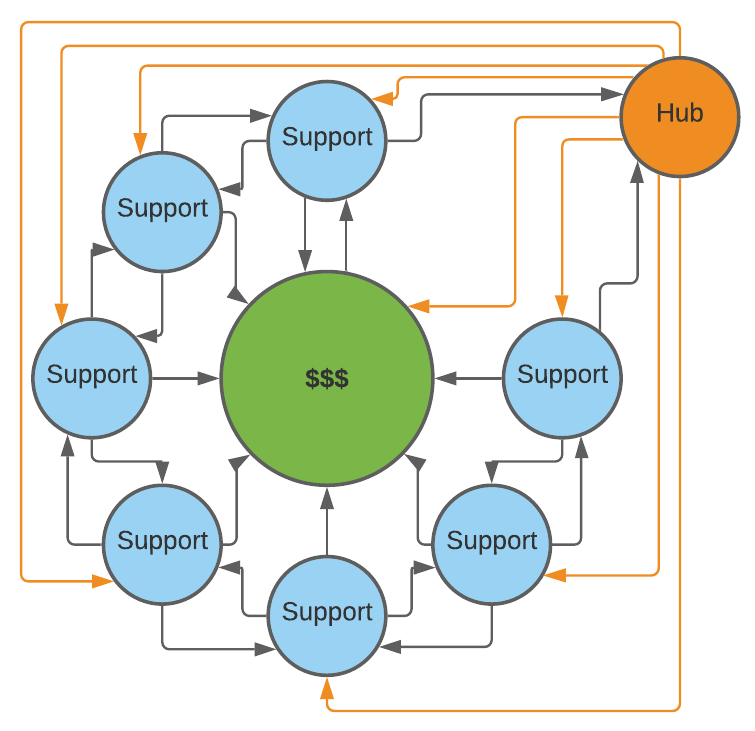
The hub page would be the last supporting page within your silo and would link out to every single page that's part of it.
Think of it as a custom category page, if your silo were a category.
The hub page would explain the main topic ("golf clubs" in our example) and divide your silo into different sections that link out to all the pages from the list items.
For example, if you built a large silo around your "best golf clubs" page that covered everything from "best golf clubs for X" to individual product reviews and how-to guides about golf clubs, your hub page would be a kind of well-designed HTML sitemap with decent content on it that groups and links out to all of them.
This hub page should then be your main focus for link building (internal and external), be part of your main navigation, and be featured on your home page.
If you mention golf clubs on pages that aren't already part of another silo, this is the page you want to link to.
It's basically the entry point of your circular silo for both link equity and users.
You don't necessarily want to rank it for a keyword.
But still, it might make sense to try to rank it for the silo's head term ("golf clubs") or a high-level informational keyword, such as "what is a golf club".
Pitfalls
There are some potential pitfalls with this silo structure that you should be aware of:
Not Enough Topical Relevance
Topical relevance is key.
The more attention you pay to this, the better your results will be.
If you're building a silo for "golf clubs," you don't want to add pages about "golf balls" just because there's a keyword overlap with "golf.
Use your brain and keep the silo pages as relevant to each other as possible.
Not Enough Supporting Pages
While a silo with three supporting pages may be better than no silo at all, you probably won't see massive shifts in your rankings.
As a rule of thumb, use at least 5 supporting pages for each main silo.
For nested silos, 3 may be enough.
But in general, the more pages a silo has, the better.
However, it always depends on the breadth of the topic.
In some cases, there may be very few subtopics you can target, and in other cases, there may be hundreds.
What's important is that you fully cover everything that's very closely related-whether that means 5 supporting pages or 100.
Don't force loosely related supporting pages into a silo just to make it bigger.
Not Strict Enough
Double and triple check that your silo pages are linked exactly as they should be.
Don't link out to pages that are not part of the silo. This won't kill your silo, but it should be kept to a minimum.
The money page should only have a single outbound internal link to the first supporting page within the cluster.
Then each supporting page should have only three outgoing internal links, as explained above.
However, linking to any page within a silo from another page that isn't part of the silo and is only loosely related is usually not a problem.
If you're using a hub page as part of your silo, you'd primarily link to it from loosely related content, as it spreads link equity evenly throughout the silo and also acts as an additional relevance filter.
Link Building Considerations
If you're building backlinks to rank a silo, don't go overboard on the money page.
Instead, focus your link building efforts primarily on the hub page when using one and the other supporting pages.
This will boost the entire silo and eventually boost the rankings of your money page, which is the central point of the feedback loop within the circular silo.
The advantage of this is that it's generally easier to get links to informational content than to money content.
Plus, you don't really have to worry about the anchor text of your backlinks, because the link equity is passed on to the money page through the internal links and optimized anchors.
Google Sheets Template
I created a Google Sheets template for all three silo variations covered in this guide.
Just make a copy:
Final Thoughts
The Circle Jerk Silo is a massive competitive advantage when implemented correctly.
You'll need fewer backlinks to rank, and you'll have fewer problems with Google's search algorithm updates.
You can implement this on pretty much any type of website, although this guide focuses on affiliate sites.
When you implement this, share your results on social media! 🙂
Pro Tip: If you want to save time and stop managing your silos manually, click here to check out LinkBoss which supports all the silo structures mentioned above.
